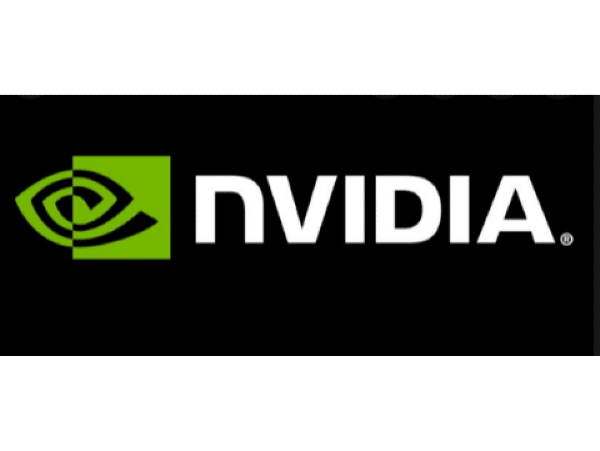It is also called market analysis or equity analysis.
Traders or investors decide to buy or sell stocks based on analysis. The stock analysis provides traders insight into securities, the stock market, and the economy. Studying past and present data about the market is involved in creating a methodology used to choose appropriate stocks to trade. It also includes identifying ways to enter or exit investments.
Fundamental analysis involves evaluating a company's stock at the basic level of finance. Investors use the analysis to decide whether the current price of a business's stock reflects the value of the company's future value.
Different factors, such as the company's finances and the current economic environment, are used to estimate the value of the stock. Key ratios used to understand the actual value of a company's stock and determine its financial health include
- Dividend Payout Ratio
- Return On Equity
- Price to Book ratio
- Price to Earnings ratio
- Price to Earnings to Growth ratio
- Earnings per share
Earnings Per Share
The Earnings Per Share (EPS) indicates a company's profitability. When the EPS increases, traders consider it a good sign. The higher the EPS is, the more the shares of a company are worth buying.
While EPS is indicative of a company's profitability and distribution among shareholders, it needs to be analyzed in conjunction with the number of outstanding shares and the share price. Investors typically consider both the EPS and the share price as factors in making decisions about the stocks of a company.
The formula used to derive the EPS is the difference between the generated net income and preferred dividends distributed divided by the average number of outstanding shares of stock.
Price to Earnings Ratio
The Price to Earnings ratio indicates how much investors will pay for the company's earnings. Overvalue stocks have high P/E ratios. The high ratio can also mean that the company is expected to do exceptionally well over time. A low P/E is considered unfavorable. As an aid in interpreting stocks, the general rule is
- 10 or lower – No growth
- 12 – Slow growth
- 15 – Moderate growth
- 25+ - Fast growth
Price to Earnings to Growth
The Price to Earnings to Growth ratio (PEG) helps determine the value of the stock of a company while considering the company's earnings growth. The PEG ratio, together with the P/E, helps obtain a clearer picture of the stock than the P/E alone.
Price to Book Ratio
The Price to Book ratio (P/B) compares the company's market value with its book value. Investors want to know the value the stock market places on the stock relative to the company's book value. They will trade for more than a company's book value if the company is in sound financial health. Investors consider the future growth of a company while pricing the stocks.
Book value is the company's net assets. The value is calculated by subtracting the liabilities from the assets. Another means of calculating the book value is the total equity of shareholders. The equity a company has can be sold to pay shareholders if liquidation is necessary.
Return On Equity
Return on Equity (ROE) measures how effectively assets are used to produce earnings. A high ROE implies a company extrudes greater profits with its available assets. All things equal, it is better to invest in companies with a high ROE for the long run.
Dividend Payout Ratio
The dividend payout ratio is the percentage of earnings paid to owners or shareholders of a company. Earnings not passed on to shareholders are used to reinvest in business operations, pay off debts, or be retained for use in the future.
Beta Measure
Investors assess the risks involved in buying or selling stocks. The risk concept is not easy to factor in stock valuation and analysis. Beta is a popular statistical measure indicator. Analysts use it to determine the risk profile of a stock.
There are limits to the use of beta. It is used mainly in analyzing the price risk. Beta is a measure of the volatility of a stock compared to the overall market. The market has a beta of 1.0. A beta of more than 1.0 indicates an aggressive stock with higher volatility. When the beta is below 1.0, the stock is less volatile. In an overvalued market, it is wise to invest in stocks with a beta less than 1.0
Where Can You Find Stock Analysis Data?
Here are two websites that provide some insight into stock analysis. The first is the Buffet Indicator that, at present reports, the Stock Market is modestly to significantly overvalued. The other is a website entitled Stock Analysis that gives the EPS, P/E, Beta, dividend payout ratio, and a graph of the stock's revenue and earnings financial performance.
Chaster Johnson, a former hedge fund analyst, suggests investing in conservative stocks, such as utilities and consumer staples, when the market is in its current position. Look for a beta less than 1.0, a low price-to-earnings ratio of less than 10, and revenue going up.
If you plan to invest in stocks, consider working with a financial advisor. They often are experienced stock market investors. Financial advisors are excellent partners for those wanting to improve their portfolios.



















It is also called market analysis or equity analysis.
Traders or investors decide to buy or sell stocks based on analysis. The stock analysis provides traders insight into securities, the stock market, and the economy. Studying past and present data about the market is involved in creating a methodology used to choose appropriate stocks to trade. It also includes identifying ways to enter or exit investments.
Fundamental analysis involves evaluating a company's stock at the basic level of finance. Investors use the analysis to decide whether the current price of a business's stock reflects the value of the company's future value.
Different factors, such as the company's finances and the current economic environment, are used to estimate the value of the stock. Key ratios used to understand the actual value of a company's stock and determine its financial health include
Earnings Per Share
The Earnings Per Share (EPS) indicates a company's profitability. When the EPS increases, traders consider it a good sign. The higher the EPS is, the more the shares of a company are worth buying.
While EPS is indicative of a company's profitability and distribution among shareholders, it needs to be analyzed in conjunction with the number of outstanding shares and the share price. Investors typically consider both the EPS and the share price as factors in making decisions about the stocks of a company.
The formula used to derive the EPS is the difference between the generated net income and preferred dividends distributed divided by the average number of outstanding shares of stock.
Price to Earnings Ratio
The Price to Earnings ratio indicates how much investors will pay for the company's earnings. Overvalue stocks have high P/E ratios. The high ratio can also mean that the company is expected to do exceptionally well over time. A low P/E is considered unfavorable. As an aid in interpreting stocks, the general rule is
Price to Earnings to Growth
The Price to Earnings to Growth ratio (PEG) helps determine the value of the stock of a company while considering the company's earnings growth. The PEG ratio, together with the P/E, helps obtain a clearer picture of the stock than the P/E alone.
Price to Book Ratio
The Price to Book ratio (P/B) compares the company's market value with its book value. Investors want to know the value the stock market places on the stock relative to the company's book value. They will trade for more than a company's book value if the company is in sound financial health. Investors consider the future growth of a company while pricing the stocks.
Book value is the company's net assets. The value is calculated by subtracting the liabilities from the assets. Another means of calculating the book value is the total equity of shareholders. The equity a company has can be sold to pay shareholders if liquidation is necessary.
Return On Equity
Return on Equity (ROE) measures how effectively assets are used to produce earnings. A high ROE implies a company extrudes greater profits with its available assets. All things equal, it is better to invest in companies with a high ROE for the long run.
Dividend Payout Ratio
The dividend payout ratio is the percentage of earnings paid to owners or shareholders of a company. Earnings not passed on to shareholders are used to reinvest in business operations, pay off debts, or be retained for use in the future.
Beta Measure
Investors assess the risks involved in buying or selling stocks. The risk concept is not easy to factor in stock valuation and analysis. Beta is a popular statistical measure indicator. Analysts use it to determine the risk profile of a stock.
There are limits to the use of beta. It is used mainly in analyzing the price risk. Beta is a measure of the volatility of a stock compared to the overall market. The market has a beta of 1.0. A beta of more than 1.0 indicates an aggressive stock with higher volatility. When the beta is below 1.0, the stock is less volatile. In an overvalued market, it is wise to invest in stocks with a beta less than 1.0
Where Can You Find Stock Analysis Data?
Here are two websites that provide some insight into stock analysis. The first is the Buffet Indicator that, at present reports, the Stock Market is modestly to significantly overvalued. The other is a website entitled Stock Analysis that gives the EPS, P/E, Beta, dividend payout ratio, and a graph of the stock's revenue and earnings financial performance.
Chaster Johnson, a former hedge fund analyst, suggests investing in conservative stocks, such as utilities and consumer staples, when the market is in its current position. Look for a beta less than 1.0, a low price-to-earnings ratio of less than 10, and revenue going up.
If you plan to invest in stocks, consider working with a financial advisor. They often are experienced stock market investors. Financial advisors are excellent partners for those wanting to improve their portfolios.